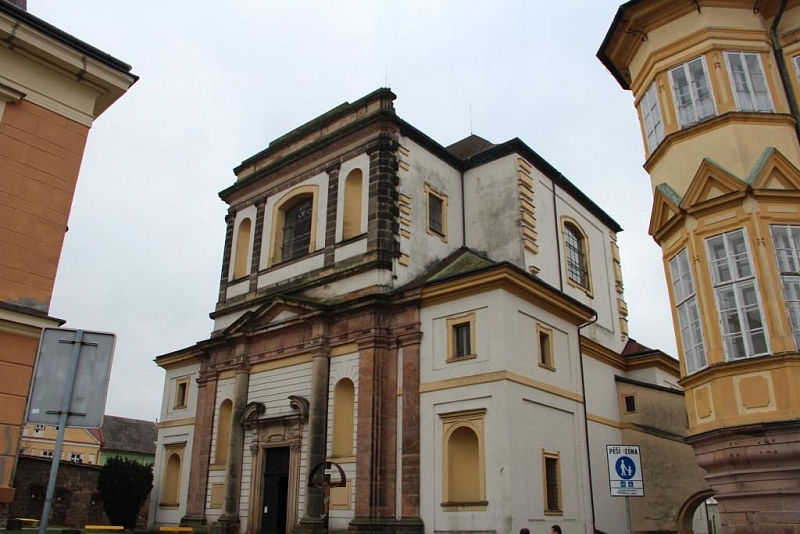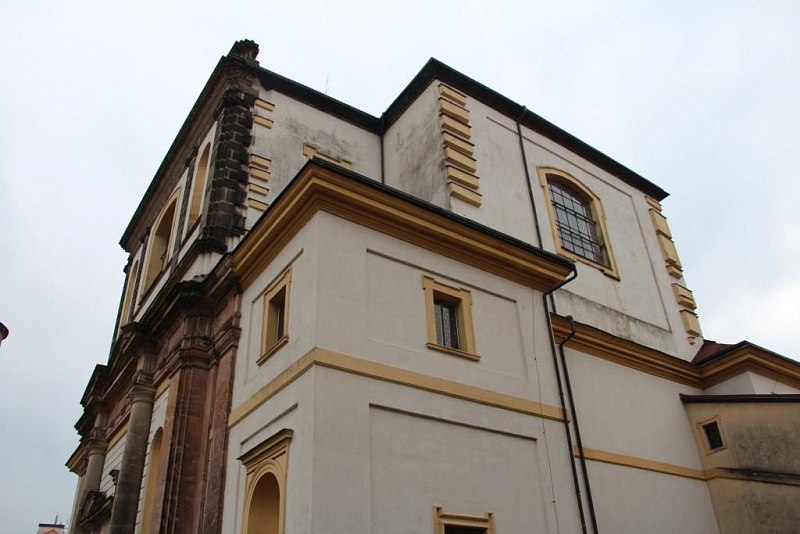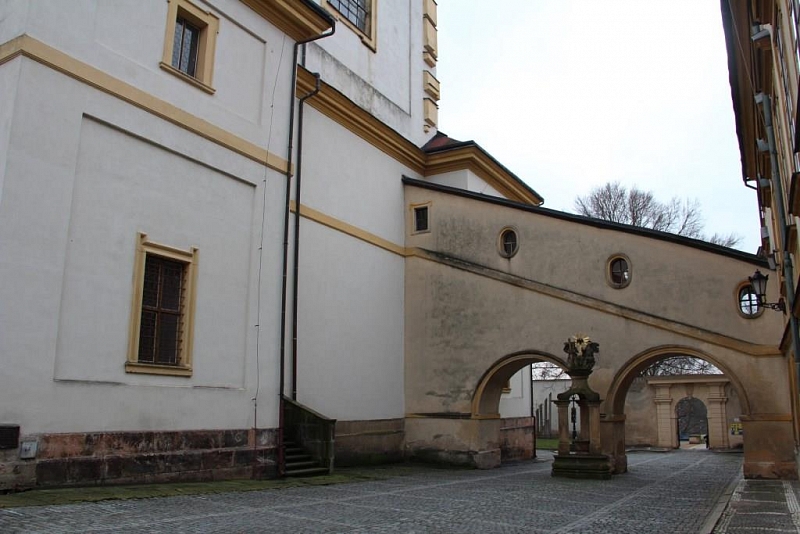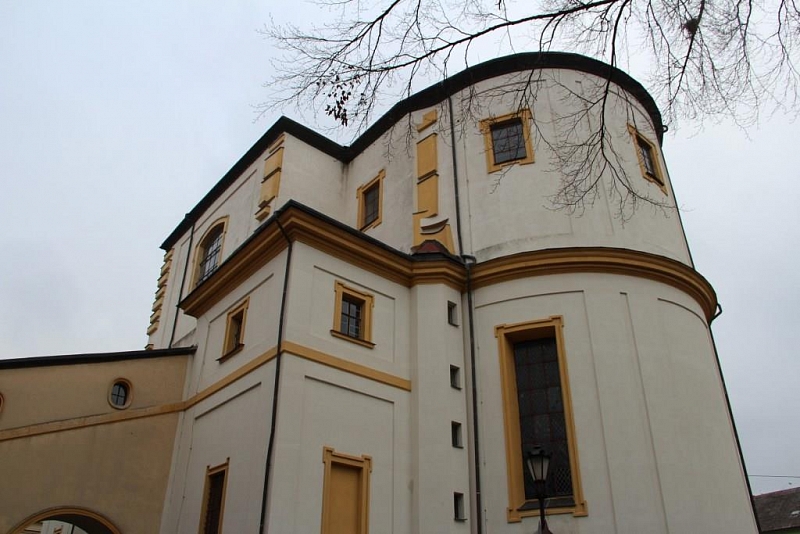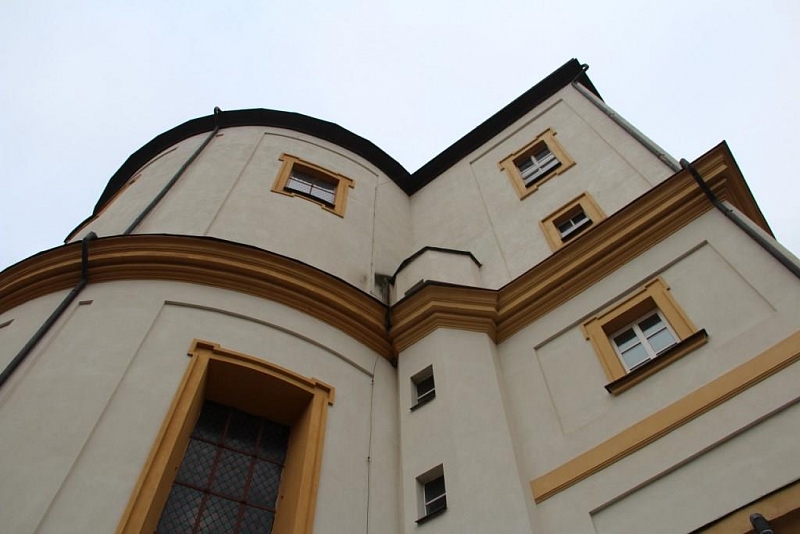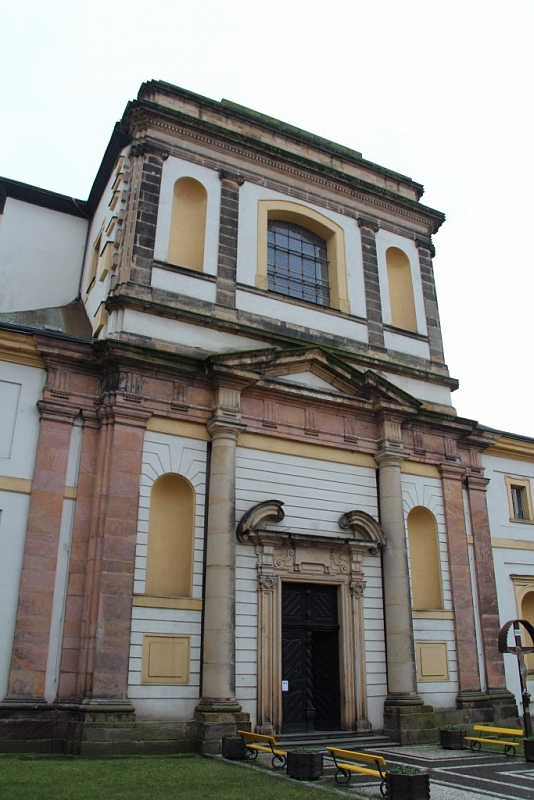Church of St. Jakub Většího Jičín
In the immediate vicinity of the Valdická Gate, on Valdštejnské náměstí, there is one of the most important churches in Jičín, which is connected to the chateau, which can also be found next to the church, by a Baroque corridor. In its place once stood several burgher houses, which Albrecht of Wallenstein had demolished and built instead a church, dedicated to St. James.
Information for visitors
Interesting facts Church of St. Jakub Většího Jičín
The consecration of the church dates back to 1701 and the architectural peculiarity is the fact that the church lacks a tower, resp. it does not have it intentionally, in accordance with the idea of the Wallenstein-composed landscape in which the church of St. Jakub Většího one of the centers.
The interior of the church has a very peaceful atmosphere for visitors. Visitors are captivated not only by the frescoed ceiling, but also by equipment from the late Baroque period or the altarpiece depicting St. Jakuba. The impression is also enhanced by side aisles with side altars with paintings.
Church of St. James was originally planned as a cathedral, but the original plans were eventually abandoned due to the fact that the diocese was not established here due to the disapproval of the Roman Curia. The laying of the foundation stone took place in 1627 and the architect of the church was most likely Giovanni Battista Pieroni. The construction was undertaken by the court architect Albrecht of Wallenstein, Andrea Spezza, and then by Nicolo Sebregondi.
In 1681, the church burned down and subsequent repairs lasted for twenty years, ie until 1701, when the church was consecrated. The equipment of the church, which has been preserved to this day, mostly dates from the first half of the 19th century, and was acquired after the repair of the church, which in 1768 was again destroyed by fire. During the repairs, the connection between the chateau and the western manor oratory of the church was also built. The neoclassical facade dates from 1867.
Author: Andrea Štyndlová
